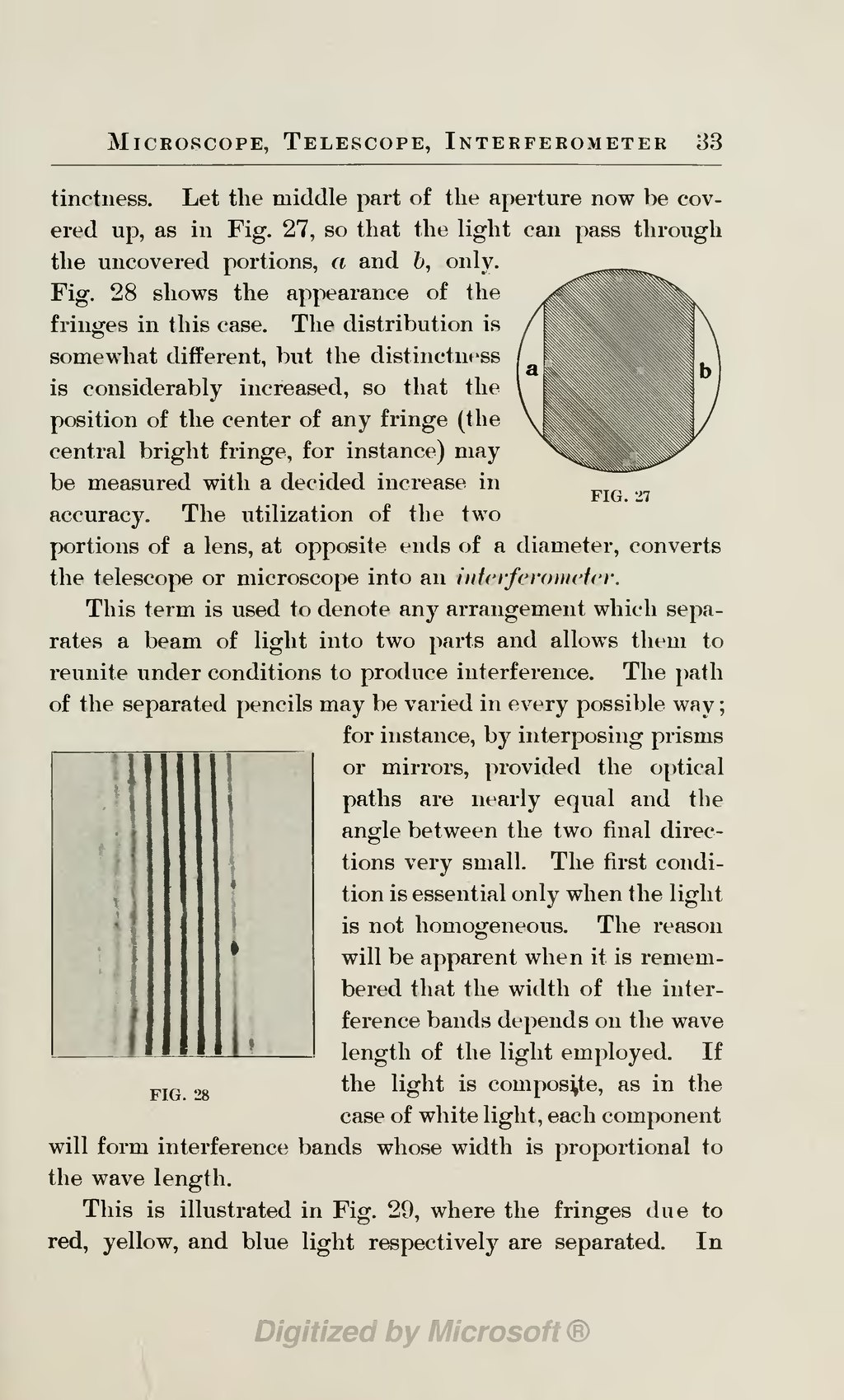tinctness. Let the middle part of the aperture now be covered up, as in Fig. 27, so that the light can pass through the uncovered portions, a and b, only. FIG. 27 Fig. 28 shows the appearance of the fringes in this case. The distribution is somewhat different, but the distinctness is considerably increased, so that the position of the center of any fringe (the central bright fringe, for instance) may be measured with a decided increase in accuracy. The utilization of the two portions of a lens, at opposite ends of a diameter, converts the telescope or microscope into an interferometer.
FIG. 27 Fig. 28 shows the appearance of the fringes in this case. The distribution is somewhat different, but the distinctness is considerably increased, so that the position of the center of any fringe (the central bright fringe, for instance) may be measured with a decided increase in accuracy. The utilization of the two portions of a lens, at opposite ends of a diameter, converts the telescope or microscope into an interferometer.
This term is used to denote any arrangement which separates a beam of light into two parts and allows them to reunite under conditions to produce interference. The path of the separated pencils may be varied in every possible way; FIG. 28 for instance, by interposing prisms or mirrors, provided the optical paths are nearly equal and the angle between the two final directions very small. The first condition is essential only when the light is not homogeneous. The reason will be apparent when it is remembered that the width of the interference bands depends on the wave length of the light employed. If the light is composite, as in the case of white light, each component will form interference bands whose width is proportional to the wave length.
FIG. 28 for instance, by interposing prisms or mirrors, provided the optical paths are nearly equal and the angle between the two final directions very small. The first condition is essential only when the light is not homogeneous. The reason will be apparent when it is remembered that the width of the interference bands depends on the wave length of the light employed. If the light is composite, as in the case of white light, each component will form interference bands whose width is proportional to the wave length.
This is illustrated in Fig. 29, where the fringes due to red, yellow, and blue light respectively are separated. In
